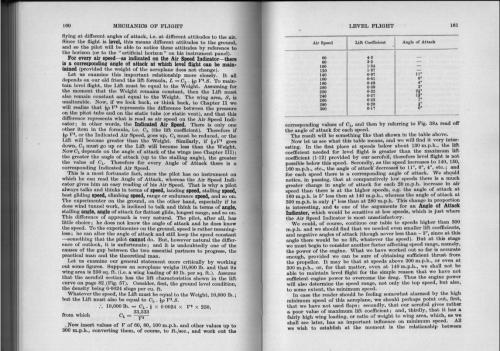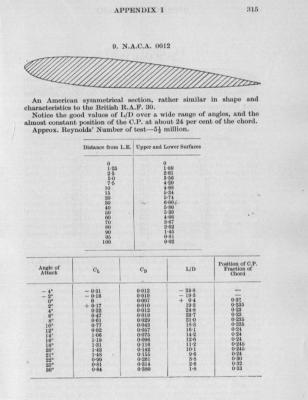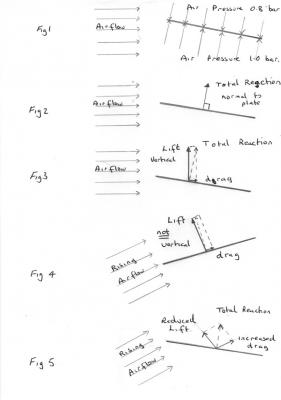-
Posts
18270 -
Joined
-
Last visited
-
Days Won
104
Content Type
Profiles
Forums
Events
Everything posted by studiot
-
Each turn is in series with every other turn. That is each turn is one of an array of series inductors. There are two cases of series inductors. Aiding where the formula for combination is L1 + L2 + 2M where L1 and L2 are the inductances of the turn and M is their mutual inductance. and opposing where the formula for combination is L1 + L2 - 2M. Since each turn of a coil is wound in the same direction and has the same inductance L the turns are all aiding so we have the situation [math]{L_{total}} = \mathop {\lim }\limits_{n \to \infty } \left( {nL + 2\left( {n - 1} \right)M} \right) = \left[ {\mathop {\lim }\limits_{n \to \infty } n\left( {L + 2M} \right)} \right] - \left[ {2M} \right][/math] Which is indeed infinite. However you should note that the series forming the sum is linear, it is not asymptotic, like many curves in electricity.
-
No worries, but you should consider this. Any object rotating with the Earth eg a set of balance scales on the surface measures a different value of g, depending upon where on surface it is. This is called apparent g. The easist way to understand this is to understand to realise that any rotating observert will observe an outward centrifugal force, reducing force of attraction due to gravity. This is much smaller than gravity itself. So the value of apparent g at the poles, where the centrifugal reduction is zero is 9.83. and the value at the equator where the reduction is maximum is 9.78. Note the following. The weight of an object is its true mass multiplied by the apparent gravity i.e. the total force betwen the Earth and the object. This is what is measured by a spring balance, which measures Force. A beam balance reports a different weight from a spring balance because both the weights and the weighed object are equally affected by the rotational reduction and they cancel out. A beam balance measures mass. https://en.wikipedia.org/wiki/Gravity_of_Earth
-
Good question because although the above quote is a true statement it is a pretty poor definition at best and misleading at worst. So I suggest we should start by considering what a substance is. Objects can be material objects, like spoons, plates, cups, flames, tree trunks, amd so on. Objects can also be non material objects like light, shadow, magnetic fields and so on. Material objects are made of substances, non material objects are not. But both are real. Matter is the general term for all substances. Substances are not the things themselves, they are types of matter, like iron, water, air, earth, plastic, wood and so on. But a material object like a plastic spoon is not a substance, it is made of a type of matter which is a substance called plastic. OK so substances can also have many appearances, solid, liquid or gas as in the examples shown. Substances can be combined to form more complicated substances. One way to combine substances is just to mix them together. So concrete is a mixture of sand, stones, cement and water. But the proportions of the mixture are not fixed or exact. One lump of concrete can contain more stone or more cement than another. But the substance is still concrete. Concrete is a mixture. Mixtures can be made with constant or variable proportions, but the individual components that make it up can always be divided out by physical/mechancial means. You can chip the stones out of set concrete, you can filter the earth out of a mixture of earth and water (mud) and so on, you can remove the iron cans from rubbish with a magnet etc. Another way to combine substances is to form compounds. The substances that form compounds cannot be separated by mechanical means. Further compounds always and only come in fixed proportions. Water is a compound that always contains exactly twice as much hydrogen as oxygen and nothing else. Iron, hydrogen and oxygen are examples of elements. The most basic or simplest substances are called elements. Elements cannot be broken down into simpler substances. Iron is an element, water and air are not. I have described compounds and mixtures and given water as an example. Here is a question for you Air is made of a combination of oxygen, nitrogen and carbon dioxide. Is air a mixture or a compound?
-
You are also missing out the boundary conditions. No differential equation can be used without these. In particular I started to explain Eise's diagrams which explain in what context ( ie under what boundary conditions) this is true
-
This is more fun http://www.bbc.co.uk/news/av/magazine-40586209/cutting-flatulence-to-save-the-planet
-
Maybe this is more apparent than real because cosmological phantasies have replaced much of the real Physics and Science in our high schools, and such stuff gets the most publicity. I try to rectify with references to as many of the acknowledged experts in the fields I know something about as I can. I choose those who pen the most acessible insights into their subjects. for example Atkins and Buckingham in Chemistry Beerling and Benton in Earth Science Levi in Mechanics Stewart in Mathematics There are also some professional popsci authors who have taken the trouble to get the ducks facts in order such as Sharon Mcgrayne and Gary Smith in Statistics.
-
The second point is the whole point. I remember a time when VHS and Betamax fought it out and the worst man won. Today I have just had the most unfortunate buying experience with a once proud British company. I tried to buy a 2017 model television. Despite their website's blandishments, yes they have one, in Edinburgh, but they won't move it to their store in Dundee. My trade supplier has sold out and has no plans to replenish stock. Why? Because it is 'obsolete' ie not 4k. But, because I am obstinate I located a stock of these in Prague, delivery to Dundee . Why am I obstinate? Well look at the BBC website. They do not currently broadcast anything in 4k and have no plans to do so in the forseeable future. So I am buying an 'obsolete' 2017 model to receive current and future transmissions as they are actually broadcast. Who deserves the business?
-
My apologies DM. When I first read this I thought it was just so much nonsense but I understand your point and it is a good one that demonstrates some deeper than usual thought. +1 The answer is that a plain beam will not return but remain in its tilted position. Manufacturers of scales, such as post office scales, chemical scales etc are aware of this and mechanically articulate the beam and pans to ensure that the high side is heavier than the low side, without anything on the pans. As the (empty) high side drops, the articulation brings both sides of the mechanism into rebalance at horizontal. The mechanism is different for post office and chemical type scales. In modern times electromagnetic compensators are used instead of mechanical articulation.
-
I'm glad you mentioned the impulse. +1 It is the impulse not a steady force that generates the electricity. Steady forces can produce triboelectricity. https://www.google.co.uk/?gws_rd=ssl#q=triboelectricity
-
How did that old saw go? If an expert is someone who knows a lot about a little Then a true expert is someone who knows everything about nothing. or to quote
-
Just so. I would add that both also have their excellent and their abysmal proponents and all shades between.
-
Have a more careful look at what I wrote. The baseball has a low probability of penetration in qm and zero probability in classical mechanics. Semiconductor electronics works because charges have a high probabaility of penetration, allowing frequent, desirable,'quantum' effects. If what I said about the coin toss was not true, it would be impossible to create a perfect tosser, even in a thought experiment, because you would have to account separately for an possibly infinite number of possible minor outcomes with low probability, instead of lumping them all together. Getting bogged down in over accurate calculation minutae rather than getting a handle on this aspect of probability is like missing the wood for the trees.
-
I agree +1 I have one bench machine I built some years back that came with a P3 and Windows 98. After a several years I installed Windows 2000. I keep it as a dedicated machine for writing CD and DVDs No modern machine can do any better because the CD interface limits the throughput. Sorry I can't agree that materials science is that good. This was the fallacious dream promoted by the early introducors of semiconductor devices. Certainly materials science has improved dramatically since the tin whisker dendrites of the early germanium transistors, but it is far from immortal. Solid state diffusion still occurs, albeit at a reduced rate.
-
The piezo effect generates a voltage which drops off rapidly when current is drawn. The resultant current depends upon impednace of the load.
-
All this latest discussion about angels and pinheads was why I wanted to compare the statistics of coin tossing with that of die rolling in an earlier thread. With coin tossing there is only one way (and therefore one probability) to report a given outcome. With die rolling you can report A number greater than 3 A five An odd number and so on. Each of these are respectable outcomes with their own particular probabilities. But some are also combinations of each other. The lesson about probability from this is that you can lump together a whole raft of minor outcomes in one single outcome labelled 'misfires', or whatever you chose to label it, in the case of the coin tossing machine. If you can show that this combined probability form all causes is less than some set value, you can ignore it. This is the basis of a modern engineering design method known as limit state analysis. As regards the probability of a baseball penetrating a brick wall you don't need to be able to calculate it exactly if you can show it is below some acceptable level. But remember that modern electronics depends upon there being an acceptably high probability of the equivalent happening to the charges in the circuit.
-
Thanks andy for finding a working video. +1 The video linked on the seller's site didn't work. The written text instructions are worse than a joke. 5 buttons - I count 7 Long screed about fitting a 9 volt battery As the video says, it uses two AA batteries. Hold enter down for off. No it has an off switch. "put most left transistor three slot" Your guess is as good as mine. *************************************************** Well the instrument has arrived and mostly works as described by the guy in the vid, but it didn't recognise a 741. Correctly identified a 2N5401 pnp transistor type and pinout. Correctly identified CMOS 4001 gate chip. Thanks everybody else for suggestions, keep them coming. It could be a very useful gadget with some reliable instructions.
-
-

Determination of the salinity of three estuarine water samples
studiot replied to FBarrett's topic in Homework Help
Further do you know why you are given three samples but only asked to calculate the concentration for 2 of them? R2 is a statistical measure of the 'quality' of the straight line on the graph. https://www.google.co.uk/search?q=R%5E2+in+regression+analysis&ie=utf-8&oe=utf-8&client=firefox-b-ab&gfe_rd=cr&ei=GBJkWaD9D8bU8gfcg5_oBw -
Yes there is a simple formula, but you can't just bung any old numbers into it, as this extract demonstrates. Some national aeronautical agencies publish tables of aerofoil characteristics to enter into the formula for lift and drag so if you know the wing shape and size you can look up the lift, for various flight conditions. for example
-
Thank you for the picture, Sensei, but please check your directions. It shows the important fact that The arrows point in the same direction all the way from the blue to the red. @Capiert, it is not an unreasonable guess that the two fields somehow cancel in the middle. Unfortunately, as swansont said, it is a guess and not correct Physics. The key to this is in the fact that the lines of force point inwards at negative charge and outwards at positive https://www.google.co.uk/search?q=lines+of+force+at+positve+and+negative+charge&ie=utf-8&oe=utf-8&client=firefox-b&gfe_rd=cr&ei=NH1iWZbuFKqn8wexs6S4AQ So the lines of force between the plates are continuous frok one plate to the other. They do not change over half way.
-
Unfortunately it's not as simple as that. Equally too many make it too complicated by long unproductive arguments about the origin of the lift. So here is an uncomplicated development, accessible to any upper high school pupilof physics / applied maths. First let me say that Lift is a vector and it often does not point directly upwards in real flight. Aircraft climb and descend, bank and turn, and fly at various airspeeds. Initially considering real aircraft shapes and airfoils tends to hide the mechanics of what is going on so I will start with a flat plate. The plate is inclined to the airstream and we shall see why this is and the effect of that inclination with the help of the figures below. We shall also see why aircraft like to maintain straight level (horizontal) flight as much as possible. So to Figure1. It doesn't matter whether the air moves over the plate as shown or the plate moves throughstill air, the effect is the same. In this situation, It is an observed fact that the average pressure pushing down on top of the plate is lower that the average pressure pushing up on the underside. Typical values are shown for subsonic aircraft. The air pressure above is reduced to about 80% of that below. This difference leads to a normal reaction (at right angles to the plate) as shown in Figure 2. Since the plate is inclined to the horizontal airflow this reaction is not vertical.. The total reaction may be resolved into two mutually perpendicular components, called the Lift and the Drag, as shown in Figure 3. Now we see the effect of tilting the plate. The Lift is vertical. Furthermore we want to maximise the Lift and minimise the Drag. This happens at low angles of inclination, as shown. So that is straight, level (horizontal) flight. In Figure 4 we turn the vector diagram in Figure 3 round so the air is now rising or the plate descending. If we maintain the plate to airstream inclination angle, the vectors will be the same but rotated by the angle of descent. So the Lift is no longer vertical. But obviously only the vertical component of the Lift force supports the plate. As we increase the angle of inclination to the airstream, the vectors change, with the Lift reducing and the Drag force increasing as shown in figure 5. Further the angle of Lift becomes less favourable, but the Drag can be seen to be providing a significant upward contribution. So the developed Lift depends upon how the aircraft is flying. Furthermore we have only so far discussed straight flight, so the diagrams have been two dimensional. As soon as we take turning manouveres into account we must resolve the total reaction in three dimensions, not two. If this is of interest let us know your proposed application for more detail.
-
This thread had become so vituperous that I had withdrawn. However I have noticed something in the above. Eldad Eschel, You don't seem to know what Fermat's Last Theorem actually says. This is perfectly consistent with the first part of what you say, but perhaps your difficulty is contained in your last two lines where you seem to think that Fermat or someone offered three such numbers for some n>2 He did not. Have you perhaps misread the theorem?
-
Fermat's Last Theorem?
-
Does it also happen on 'busy' sites such a Ebay, the websites of newspapers CNN etc? I think it is much more likely to be the interaction between your browser and such sites where there are umpteen people tracking you these days to try to advertise to you. Have you got anything to do with 'babylon' or 'protection' in your program list. These are spyware things that are not prevented by antivirus.
-

Imagination is more important than knowledge
studiot replied to Itoero's topic in General Philosophy
No I didn't say knowledge implies understanding, I said they were different. I also said that sometimes there was overlap. I would also agree with those who suggested that you need (perhaps a great deal of) knowledge to achieve understanding. The difficulty with that overlap is that there is no one without at least some knowledge. Driving only reqires knowledge, it does not require understanding, though some have a measure of both. Do you understand why you drive on the right? All that is required is the knowledge that it is so. Do you understand why the speed sign has the design it does? All that is required is the knowledge of its appearance. Do you understand what the green and red zones are on the tachometer or do you just have the knowledge that you must keep it in the green? Most people have some understanding, but considerably more knowledge about cars and driving. There is also another quality involved. - skill. Again some have more than others, despite both substantial knowledge and understanding.





